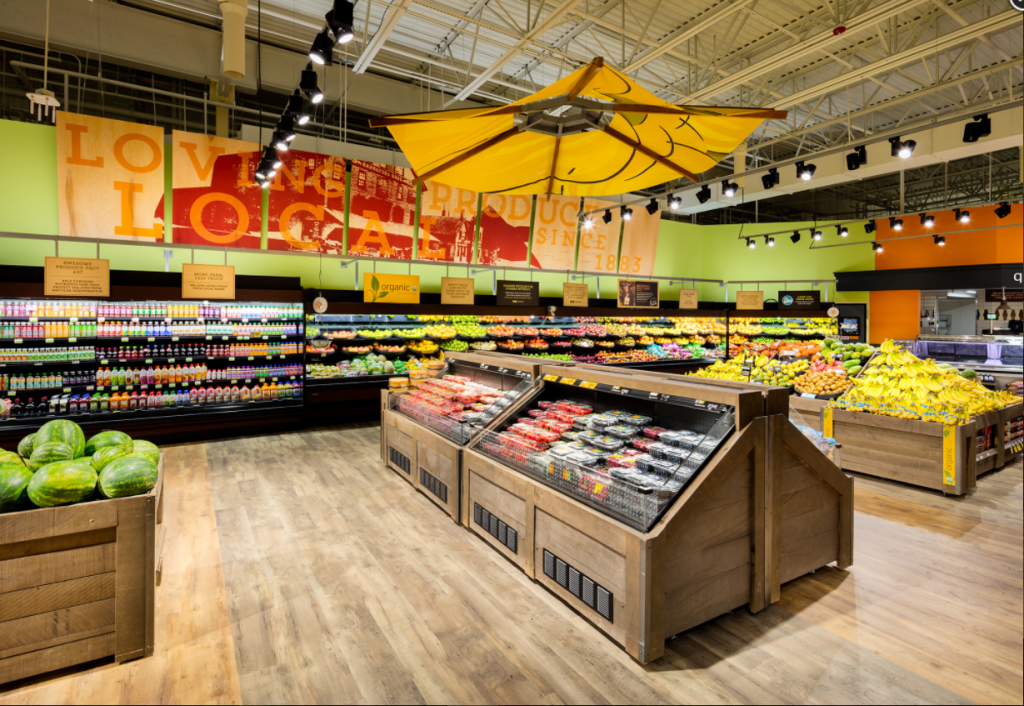Answering Supermarket Shoppers’ Single Question

What’s for dinner?
That’s a question up to 80% of Americans can’t answer by 4 p.m. on a given day, according to food service data provider Food Genius.
More and more, shoppers are walking into supermarkets, looking for dinner inspiration, rather than shopping with a set list. This gives supermarkets a tremendous opportunity to drive sales in the high-margin, fresh and prepared foods perimeter areas. Lighting these areas to showcase the eye-catching colors of crisp produce or savory rotisserie chickens can translate into increased sales.

Lighting the perimeter areas well so merchandise moves quickly is important and it’s only going to grow in urgency as Millennials age into their prime purchasing years. Already poised to become the largest living generation in the United States by 2019 (Pew Research), Millennials value food freshness more than any other generation.
Despite the tech-savvy, Amazon-loving stereotypes of Millennials, they aren’t doing all their shopping online. They understand that fresh doesn’t come out of a mailed package and they are willing to chase down the freshest foods, visiting three stores or more to find it, according to an Acosta 2017 “Trip Drivers” report.
To boost sales in fresh and prepared foods departments, presentation is critical. Grocery stores need their perimeter foods to literally be seen in the best light. Enter Fresh Color LED technology.
Unlike early generation LEDs and outdated light sources like metal halide, halogen and fluorescent lamps, today’s Fresh Color LEDs can make produce look like it came from the fields that very day. Under high quality LEDs, prepared foods practically call out to be eaten for dinner.
It all comes down to color quality. Color is the language of fresh and vibrant hues are the key to sending the message—think bright red tomatoes and lush green leafy veggies.
Things tend to look best in natural sunlight—whether it’s a pinstripe suit or a marbled steak. The sun is the light source we compare all other lights too. Artificial light sources have historically struggled to replicate how colors appear under natural light. Halogens are warm-tinted and they project heat, while metal halides, early LEDS and fluorescents deliver flat and dull colors.
With Amerlux’s Fresh Color LEDs, you can finally bring the sun into your store. The natural colors of fresh food shine under these LEDs. With their outstanding color rendering abilities, under LEDs, fresh foods look like they were just picked from the fields.
Light falls on a spectrum and conventional light sources emit light at fixed points along the spectrum. Since LEDs are made from electronics, they can be tuned to showcase the natural colors in fresh foods. LEDs can bring out the reds in meat, emphasize the “farmer’s market” appearance of fruit and vegetables and highlight the cool silver scales of the fresh-caught fish.
The Fresh Color LED lights don’t change the colors of food; they show the foods’ natural true color and highlight the freshness of the product. This enhances your shoppers’ perceptions of fresh and is the key to luring Millennials.
As an added bonus, these Fresh Color LED lights won’t dry out or ripen your foods like older hot lights do and they will help grocers save money on energy costs. This is especially key for prepared cold foods, as no one wants wilted and dried out salads.
Plus, if you can nail the fresh foods, you’ll likely benefit from a halo effect, as shoppers come for the fresh food and then buy other items.
Discover how Fresh Color LED lighting can drive sales in your perimeter food departments today.

